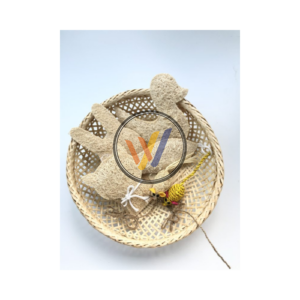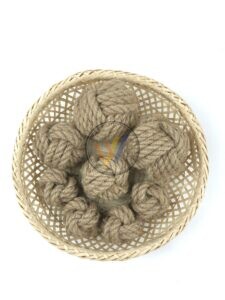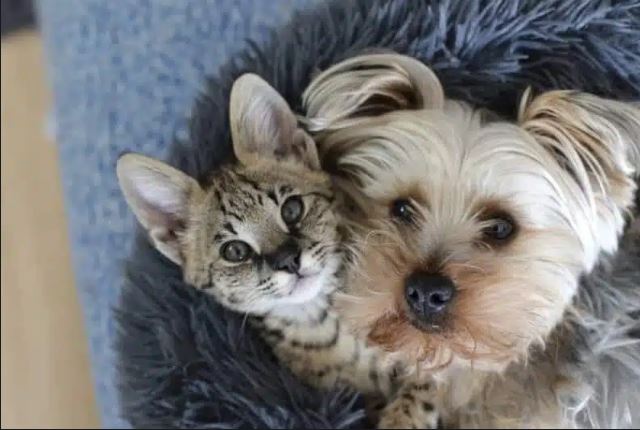BLOG
How to Detect Anxiety Symptoms in Dogs and Cats
How to Detect Anxiety Symptoms in Dogs and Cats: Common Signs and How to Handle Pet Stress
When gazing into the bright, expressive eyes of our dogs and cats, we often see only joy and excitement. However, our furry friends might sometimes experience anxiety and stress that we might not immediately recognize. Understanding these signs and knowing how to address them is crucial for maintaining your pet’s well-being. Let’s explore how to identify anxiety symptoms in dogs and cats and learn effective strategies to help them feel more comfortable and secure.
Understand How to Identify Stress in Your Dogs and Cats and Find the Right Support with WINVN’s Natural Solutions
Pets may not always show signs of anxiety in obvious ways, making it essential for owners to recognize the symptoms and take action. This guide covers common anxiety indicators in dogs and cats and offers practical methods to create a calm environment for your pets. Discover WINVN’s range of natural, stress-relief products that help promote a relaxed, healthy lifestyle for your furry friends.
Signs of Anxiety in Dogs
- Behavioral Changes: Anxiety in dogs often manifests as a significant change in behavior. If your dog becomes unusually aggressive, excessively anxious, or starts refusing to eat, these could be indicators of stress. Changes in behavior might include avoiding social interactions or acting unusually fearful of common stimuli.
- Excessive Licking: Dogs might lick themselves more frequently than usual when they are anxious. This self-soothing behavior is an attempt to alleviate their stress. If you notice your dog engaging in excessive licking, especially in areas that are easily accessible, it’s a good idea to monitor for other anxiety-related symptoms.
- Constant Barking: Persistent barking, particularly when you leave the house, is a common sign of separation anxiety. Your dog may bark excessively as a way of expressing their distress over being left alone.
- Digging and Destructive Behavior: Dogs experiencing anxiety might engage in digging or other destructive behaviors. This could be a way for them to release pent-up energy and frustration. If you notice your dog digging up the yard or chewing on furniture more than usual, anxiety could be the cause.
Signs of Anxiety in Cats
- Inappropriate Elimination: Anxious cats might urinate or defecate outside the litter box or exhibit other unusual behaviors like scratching furniture excessively. These actions often signal that the cat is feeling stressed and uncertain about its environment.
- Frequent Hiding: Cats are known for their desire to hide when they feel threatened or anxious. If your cat is frequently hiding under furniture or in dark corners, it may be feeling insecure and anxious.
- Changes in Eating Habits: Stress can cause significant changes in a cat’s eating habits. An anxious cat might eat less or, conversely, consume more food than usual. These changes can be indicative of an underlying issue that needs to be addressed.
- Increased Vocalization: Excessive meowing or vocalizing can be a sign that your cat is feeling anxious or stressed. Cats might vocalize more frequently as a way to express their discomfort or seek attention.
How to Address Anxiety in Dogs and Cats
- Create a Safe and Comfortable Environment: Providing a calm and secure space for your pet can help them feel more at ease. Set up a cozy area with soft bedding and familiar toys to create a comforting retreat for your pet.
- Increase Physical and Mental Stimulation: Regular exercise is essential for both dogs and cats. For dogs, daily walks and play sessions can help release excess energy and reduce anxiety. For cats, interactive toys and climbing structures can provide mental and physical stimulation, helping to alleviate stress.
- Establish a Routine: Pets thrive on routine, and maintaining a consistent schedule for feeding, exercise, and other activities can help them feel more secure. Consistency provides a sense of stability and predictability, which can reduce anxiety.
- Use Anxiety-Relief Products: There are various products available that can help manage pet anxiety. Calming sprays, pheromone diffusers, and anxiety-reducing beds can create a more soothing environment. Additionally, supplements designed to support mental health may also be beneficial.
- Seek Professional Help: If your pet’s anxiety persists despite your efforts, it’s important to seek professional advice. Consult with a veterinarian or a pet behaviorist who can provide specialized guidance and recommend appropriate treatments or interventions.
Discover WINVN’s Stress-Relief Solutions for Your Pets
At WINVN, we understand how important it is to provide comfort and relief for your beloved pets. That’s why we offer a range of products specifically designed to help reduce stress and anxiety in dogs and cats.
Explore our collection of high-quality pet toys and accessories, including:
- Coffee Wood Chew Toys: Perfect for satisfying your dog’s natural chewing instincts while promoting dental health and reducing stress.

- Loofah Chews Toys: Made from natural loofah, these toys are ideal for cats and small pets to scratch, bite, and play with, helping them unwind and stay engaged.

- Hemp Rope Balls: Durable and stimulating, these toys provide both physical and mental stimulation for your pets, aiding in the reduction of anxiety and boredom.

And there’s so much more! Our selection of stress-relief products is designed to cater to the unique needs of your pets, ensuring they remain happy, healthy, and stress-free.
Visit us at WINVN today and discover how our products can make a positive difference in your pet’s life. We’re here to help you create a more peaceful and joyful environment for your furry friends.
WINVN INT CO., LTD
Natural joy made in Vietnam
☎️ +84 932 118 447
📧 info@winvnint.com
🌐 winvnint.com
🌐 https://winvnint.trustpass.alibaba.com/
📌 29, 29 Street, Van Phuc Residence, Thu Duc City, Ho Chi Minh City, Vietnam
 Tel: (+84) 932 118 447
Tel: (+84) 932 118 447  Email: info@winvnint.com
Email: info@winvnint.com 










